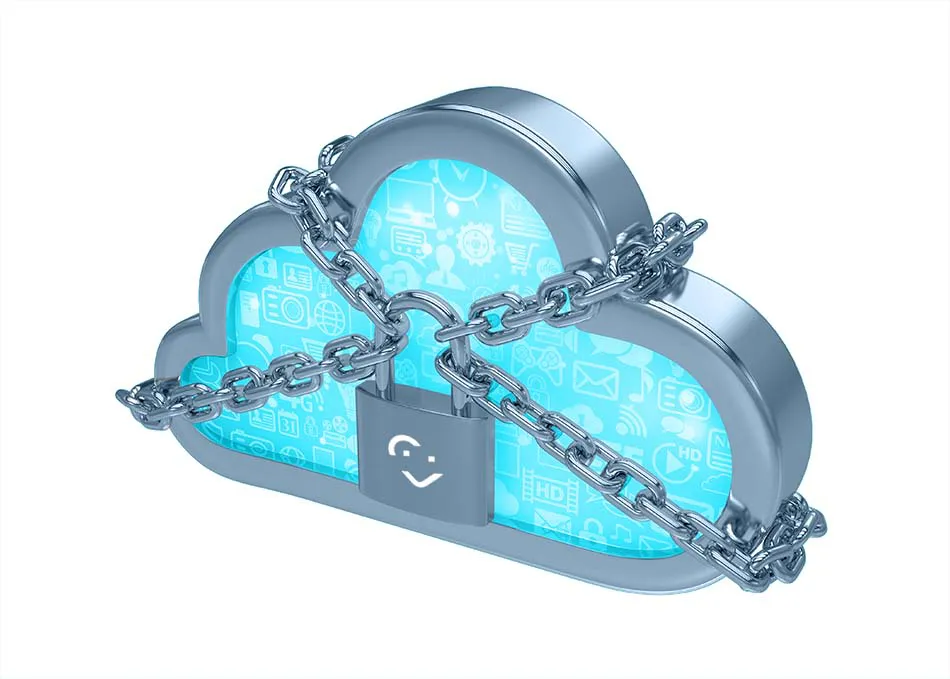The Secret 🤫 of the Cloud It scores over
the On-premises Model
with these Seven Advantages
the On-premises
with these
Especially in the context of digital transformation, the question of all questions for many companies is “On-premises or cloud?”. Unlike on-premises solutions, for which you need local servers, the data in the cloud model is stored on external servers. What advantages does the cloud ☁️ offer compared to the on-premises model?
What does “On-premises” actually mean?
If you have not yet looked into the subject (in detail):
With the on-premises model, you buy or rent the software. You then operate this on your own responsibility in your company’s internal data center or on rented servers from an external data center. With this form of hosting, you own the software in order to make it available to users in the company.
And Cloud Computing?
If you opt for the cloud, you obtain your software as a service, which is where the name Software-as-a-Service (SaaS) comes from. Hardware, operating and infrastructure costs as well as maintenance costs are borne entirely by your cloud provider. You usually conclude the contract with your provider for a fixed period.
The on-premises model certainly has its strengths. However, let’s now take a look at the benefits that the cloud offers you. What does it have to offer that on-premises can’t?
1. Easy Access and Uncomplicated Communication - no matter where you are
Working from a tablet? Or even access your software from your smartphone? If you use a cloud solution, it doesn’t matter whether you’re at your desk in the office or on the train. You can log into your system from anywhere, work through processes and communicate with your colleagues. The prerequisite for this is working Internet access.
2. Remote Work: working together as a Team without Sacrificing Efficiency
Companies around the world became particularly aware of this strength of the cloud during the corona crisis, where team collaboration had to work even when the individual team members were each sitting within their own four walls - and not in a central location, i.e. in the office. Most companies were able to do this thanks to file sharing and modern communication tools, such as Microsoft Teams.
Microsoft Teams offers plenty of possibilities for personalization, for example the popular background function, which ensures that your privacy is maintained despite video calls from your own living room.

Success Factors for Remote Work: Top Performance
despite Physical Distance!
3. Individual and Precise Cost Planning: Regular Fees instead of High Initial Investments
With the cloud, there are no high one-off investment costs for purchasing your own servers or installing software locally. Instead, you pay monthly or annual fees for the cloud services you use. This allows you to plan your individual costs very precisely.
4. High Flexibility and Scalability thanks to Customized Pricing Models
And what about the price? You have the choice between different pricing models that can be tailored to your needs:
-
Pay-as-you-go: the name gives it away. You only pay for the cloud resources that you have actually used or will use. This option is particularly suitable for smaller companies that find it difficult to predict which cloud resources they will need in the near future. Thanks to the scalability of the pay-as-you-go model, they are completely flexible and can book or cancel capacity according to their current needs.
-
Reserved instances: if you operate an application - for example a website - permanently in the cloud and therefore regularly require a fixed capacity, the pay-as-you-go model would not be economical in the long term. This is where reserved instances come in, where you reserve a certain amount of cloud storage for a fixed period of time. You can compare this to a train ticket, for example: commuters who travel to work by train every day use a monthly ticket instead of buying individual daily tickets. Here, as with the reserved instances model, customers benefit from discounts and have full control over their spending thanks to the constant costs.
-
Combination of pay-as-you-go and reserved instances: are you one of those companies that require basic capacity and always need additional storage for temporary projects or depending on the season? Then you have the option of combining both price models so that you can book additional cloud capacities “on demand”.
5. Free your Mind for other To-dos thanks to Software that updates itself automatically
If, for example, you obtain your Word, Excel or PowerPoint applications via a cloud, you can be sure that the software is always up to date. This is because the manufacturer installs the regular updates for you in the background. Companies that have set up their software via a local installation, on the other hand, have to pay for upgrades - unless they are content with old versions. But that really shouldn’t be your goal.

6. High Data Security: Sophisticated Security Concepts based on many Years of Experience
Time and again, companies ask themselves whether their data is really safe in the cloud. But the question is actually a different one: are you really so sure of yourself that you feel superior to the software giant Microsoft when it comes to security concepts and are confident enough to host your data completely on your own locally?
If you’re honest, that would almost be arrogant, wouldn’t it? Microsoft has many years of experience and the expertise of its first-class security experts to ensure that your data is optimally protected. The company employs 3,500 engineers who specialize in cyber security. Microsoft also invests one billion dollars a year in improving cyber security. A proud sum!

Cloud Security 🔐: Risks, Best Practices and Tips for Companies of all Sizes
7. Save Resources with a Lean IT Department
Last but not least: With the cloud, you also save on personnel costs. While local on-premises solutions have to be managed by your own employees, your employees can devote themselves to their core business when using the cloud.
Or is a Hybrid Solution the Answer?
It is therefore definitely worthwhile for on-premises users to think about switching to the cloud.
If you still can’t or don’t want to choose between the both hosting options, there is also the hybrid solution. This means that although your software is in the cloud, the data is on your own servers, i.e. you continue to host particularly sensitive data and applications internally. Less sensitive processes are stored in the cloud.
With the hybrid solution, you therefore benefit from the advantages of on-premises. You still don’t need your own servers - the cloud infrastructure is sufficient.
There is not only the Cloud
Cloud services can be categorized even further - depending on how users use them and how companies provide them. In addition to the hybrid cloud, examples include the public cloud and the private cloud.
Azure: Microsoft’s Cloud Platform with Data Centers in Germany
Azure is Microsoft’s cloud computing platform. Its cloud services are provided to users via a global data center network - in more than 60 regions and over 140 countries. Since 2016, there have also been two data centers in Germany: in Frankfurt am Main and Magdeburg. Previously, the closest Azure region for German customers was in the Netherlands.

If you are currently working on-premises but are planning to switch to the cloud, we will be happy to advise you on this step.


 Operating independently and flexibly
Operating independently and flexibly
